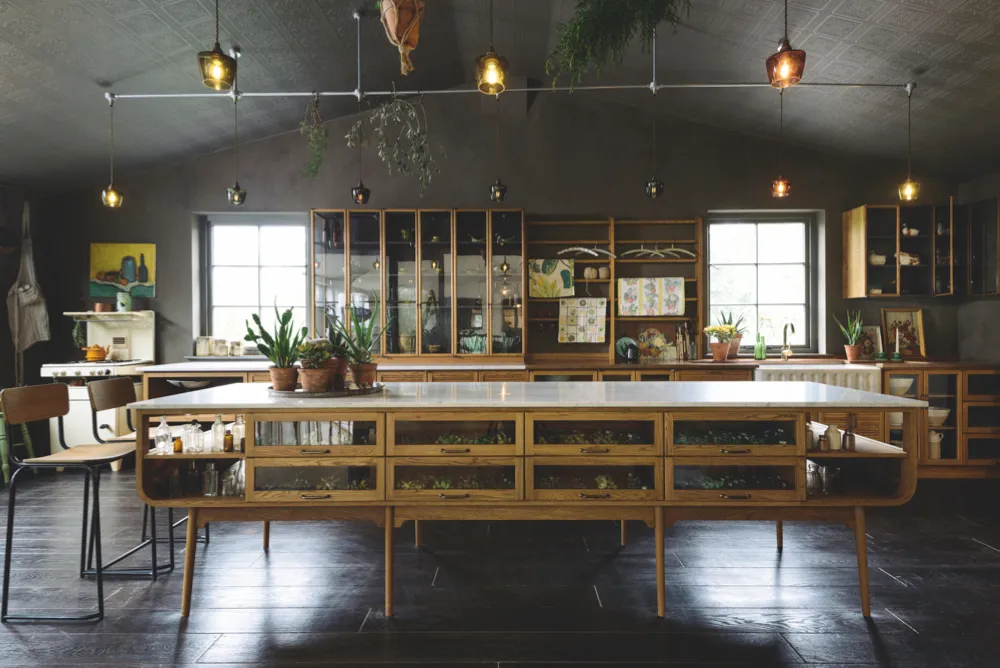1
Get into the groove
Simple and stylish, tongue and groove is easy to install and works in a wide range of situations, from bathrooms to bedrooms. The joins between the planks provide a graphic visual interest that suits a number of interior styles, including country cottage, elegant townhouse, or Scandi cabin. It is also a brilliant way to disguise uneven walls. This pure wool pink and white runner is £550 from Tate & Darby.

2
Swatch watch
This bold and witty Traite des Couleurs wallpaper from Mind The Gap (£175 for three rolls) will raise a smile from anyone whose decorative adventures always begin with endless tester pot patches. Making a virtue of indecision, the company has taken facsimile copies of pages from A Boogert’s 1692 book Traité des Couleurs Servant à la Peinture à l’Eau, which ran to 800 pages and is thought to be the first guide to paint and colour.

3
White wash
If you’d like to recreate the slapdash effect of a mist coat, Annie Sloan has the solution. First, paint your walls in a warm earthy tone to create a base colour. Once this has dried, apply a lighter, neutral shade in random areas. While this coat is still wet, use a scrunched-up piece of newspaper to create rough patches. Next, apply additional layers in a lighter shade that has been watered down, allowing the base shades to show through. Finish with Matt Chalk Paint Lacquer to make it water resistant.

4
Cabin fever
Laying planks laterally along a wall, rather than top to bottom, is an excellent alternative to traditional tongue and groove, and just as adaptable. Here, the cabin-style walls are a cosy addition to this bedroom and make a striking contrast to the elegant carved wood and wicker headboard, the chic table lamp and the statement decorative mirror.

5
Marble magic
While few us can afford to clad our walls in real marble, we can at least embrace the effect thanks to the design team at MuralsWallpaper, who have captured its natural beauty in a wide range of colours.

6
Natural finish
Bert & May’s salvaged boards are meticulously hand-finished and can be reused on walls, floors and even ceilings. Here, pale reclaimed planks enliven the beautiful lofty ceiling and complement darker floorboards below.

7
Silk route
Very much a specialist option, silk walls are the last word in luxury. Companies such as James Hare, whose silks can be paper-backed to create elegant, textural wallcoverings, will be able to recommend professionals with experience in hanging it.

8
Elegantly distressed
Exposed plaster, complete with traces of old paint and, occasionally, the ghost imprint ofa wallpaper pattern, is hugely fashionable at the moment. Teaming the untreated walls with sleek, crisply painted woodwork in a low-sheen eggshell will give it a contemporary edge. Rough-and- ready walls make the perfect backdrop for luxurious furniture, such as this Beaumont & Fletcher armchair, covered in Wicklow Damask fabric in Oatmeal.

9
Historic revival
First produced in 1887, Anaglypta was launched as an affordable alternative to intricate plaster moulding and finely carved panelling. Easily installed and painted, the heavily embossed sheets are also an effective way to disguise uneven surfaces. Traditionally used below the dado rail, Anaglypta is an excellent choice for a focal point within alcoves or on a single wall. For extra effect, use it on the ceiling. Here, the company’s 1909 design, Turner Tile, looks magnificent in a deVOL kitchen.

10
Cool contrast
A fresh coat of paint is the obvious solution when you’re looking for a quick and affordable transformation. For maximum impact, think beyond a simple all-over splash of paint – consider using several different shades in tandem to zone or define specific areas within an open-plan space, or think about using a bold secondary colour when painting skirtings, doors and window frames. In this hallway, two contrasting shades are used to create the illusion of a dado rail. The idea has been taken a step further by extending the colours across the door frame and panels to create an elegant look akin to dip-dyeing.

How to make it personal
Curiousa & Curiousa’s Esther Patterson explains how she created her own wallpaper

Having made some initial drawings, I chose the designs I liked best and scanned them into Photoshop. I then used this software to complete the artwork.
The background is a page from my sketchbook that I painted green. I then laid my freehand pencil drawings over this in Photoshop. The next step was to have the design digitally printed onto wallpaper – I used RA Smart in Macclesfield.
Once the paper was on the wall, I added further texture by hand, painting in extra detail on the stems, roses and birds.
The design was inspired by a trip to Chatsworth House in Derbyshire, nottoo far from where we live. The chinoiserie bedrooms there are just beautiful.
4 of the best antique textiles
Delicate designs on rich fabrics that will enliven your walls

A mid 18th-century tapestry fragment (£3,200, Julia Boston Antiques) depicting goddess of hunting, Diana, and her bow.

This 1920s tapestry blanket (£899, Jane Beck Welsh Blankets) is poppy red on one side and soft lavender on the other.

This beautiful1815 sampler (£POA, Witney Antiques) is worked in coloured silk thread on a fine linen ground.

A lovely vintage flat-woven wool rug (£230, Vinterior) featuring an intricate geometric design inearthy colours.